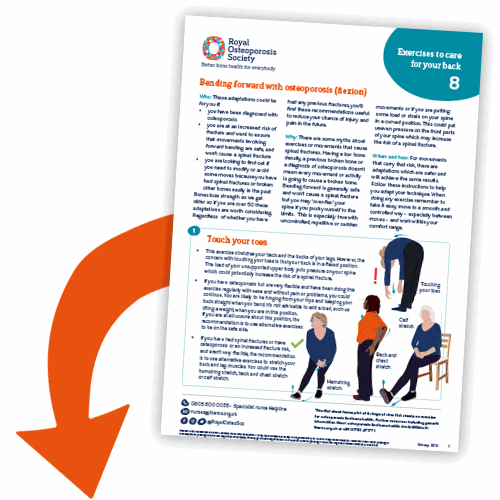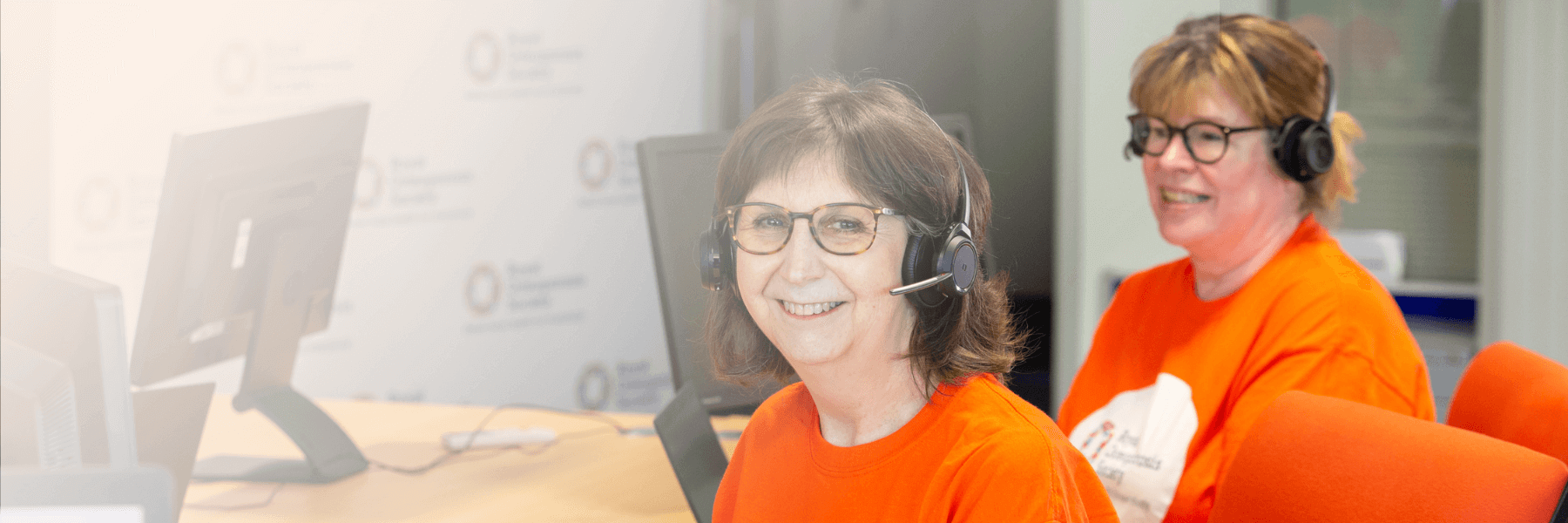
Bending forward with osteoporosis
Bending forward is generally safe and won’t cause a spinal fracture. But you may ‘over-flex’ your spine if you push yourself to the limit.
This is especially true with uncontrolled, repetitive or sudden movements, or if you are putting some load or strain on your spine in a curved position. This may put uneven pressure on the front parts of your spine, which could increase the risk of a spinal fracture.
To practise these exercises, follow the film or download the accompanying fact sheet, 'Bending forward with osteoporosis'.

Download our fact sheet
Bending forward with osteoporosisThese adaptations could be for you if:
- you have osteoporosis
- you're at increased risk of fractures, and want to make sure that bending forward is safe and won’t cause a spinal fracture
- you've had spinal fractures or broken other bones easily in the past and want to know if you need to modify or avoid some moves.
Bones lose strength as we get older. So if you are over 50, these adaptations are worth considering.
Regardless of whether you have had any previous fractures, you’ll find these recommendations useful to reduce your chance of injury and pain in the future.
When and how
Follow these instructions to help you adapt your technique and move more safely. When doing any exercise remember to take it easy, move in a smooth and controlled way – especially between moves – and work within your comfort range.
Before you start
Read the information in our fact sheet, 'About exercise for osteoporosis and bone health'. This explains the different ways that exercise and physical activity help with bone health and osteoporosis. It can help you think about how the benefits apply to you, and how the different types of exercise can help your bone health.
 Search
Search
 Login
Login

